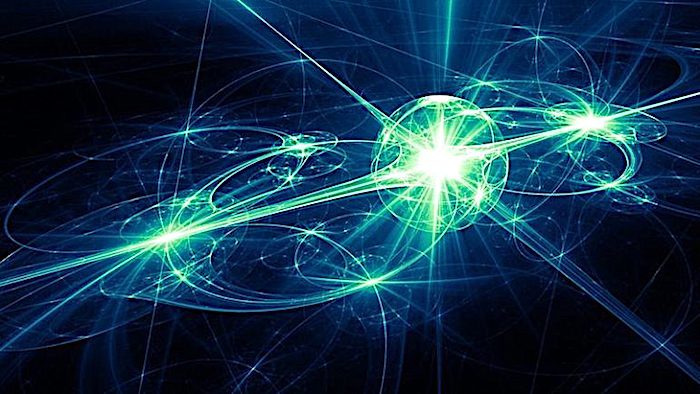True, quantum mechanics (QM) is unique also due to the uncertainty principle which challenges classical determinism; to Schrödinger's cat paradox which makes the conflict with classical physics even more acute; to the notorious wave-particle duality as demonstrated by the double-slit experiment; and to the Einstein-Podolsky-Rosen paradox which seems to run in the face of special relativity. Yet the above "if" captures something no less essential to QM, little considered so far.
But why should "If wishes were horses, beggars would ride" matter if wishes, as everyone knows, are not horses? Here is QM's answer. Suffices for the beggar's wishes that they could be horses, then, even if they are not, the theory sometimes enables beggars to ride them. This is what quantum philosophers refer to as "counterfactual," namely, an event that could have happened but eventually didn't. Amazingly, by the very potential of this possibility's occurrence, it leaves an unequivocal physical effect.
The most famous example is probably the "Interaction Free Measurement". Elitzur and Vaidman (EV) [1] have shown that a supersensitive bomb can be checked for operability without detonating it. By "supersensitive" we mean a bomb so delicate that even the weakest interaction known to physics would make it explode. Apparently, then, if such a bomb has, for example, gone wet, you cannot test it without detonating it. However, EV has shown that the very potential of the bomb to explode is sufficient for leaving a causal mark somewhere - without leading to a real explosion - a feat which in classical physics (as well as in classical logic) is by definition impossible.

Upon energy measurement, one or both atoms may turn out to be in their original, definitely-excited and definitely-ground states (a), giving the impression that no entanglement could have occurred. Yet, when enlarging the set of measurements, Bell’s theorem implies that these “no entanglement” cases are due to… well, entanglement!
Here comes the surprise. In some cases, it will turn out that, after a substantial amount of time, the excited atom has remained excited. This might suggest that this atom still holds its photon and therefore the second atom is still ground, namely it has not received any photon. In short, nothing has really happened, right?
Wrong! A celebrated theorem by Bell 1964, which has already proved that something intriguing goes in the famous EPR experiment, came to the authors' help. Aharonov et al. have shown that if you prepare many such pairs of one excited and one ground atom, then even in cases where the excited and/or ground atom have retained their initial states, something subtle has been exchanged between the two atoms nonetheless. So much so, that a physicist unaware of the interaction's non-occurrence would still find out the two atoms have become "entangled" namely exhibiting quantum nonlocality just as if they have interacted with one another.
The authors continued to present some variants of the Gedanken experiment employing either many such atoms (thereby also attaining, along the process, the multipartite W state which is of much importance in quantum information processing) or weak measurements (which shed some further light on the paradox and probing the atoms even deeper).
To quote the authors, the problem of nonlocality, which lies in the heart of the EPR experiment, turns out to be the lesser problem in this case! Here is their rationale. In the EPR experiment, there is a local mechanism producing with certainty two distinct particles, actually emitted by the atom to two faraway locations, where they are actually detected by two remote experimenters, and only then nonlocality emerges between them. In this case, however, no photon is ever transmitted, yet full-blown EPR state emerges!
To resolve the apparent paradox it was proposed to employ a time-symmetric perspective, e.g. the one enabled through Aharonov's Two-State-Vector Formalism of quantum mechanics. According to this formalism, all observable effects are equally determined by events in their past, as well as events in their future.
But are the proposed experiment technically feasible? The authors hope that this challenge will be taken by a leading experimental group utilizing either neutral atoms (as in the Gedankenexperiments) or two ions/quantum dots/NV centers.
Part of the above research has been attempted for some years to explain the effectiveness of quantum counterfactuals using weak values (but with strong, projective measurements). These attempts, which include "The Case of the Disappearing and Reappearing Particle" [3,4], will hopefully converge soon to a better understanding of a variety of quantum phenomena, all originating from Nature's selective "forgetfulness" when it comes to counterfactuals [5].
These findings are described in the article entitled "Interaction-Free Effects Between Distant Atoms", published in the journal Foundations of Physics. This work was conducted by, among others, Eliahu Cohen (previously the University of Bristol, now the University of Ottawa) and Avshalom C. Elitzur from Iyar and Chapman University.
References
- A.C. Elitzur, L. Vaidman, Quantum mechanical interaction-free measurements, Found. Phys. 23, 987-997 (1993).
- Y. Aharonov, E. Cohen, A.C. Elitzur, L. Smolin, Interaction-free effects between distant atoms, Found. Phys. 48, 1-16 (2018).
- Y. Aharonov, E. Cohen, A. Landau, A.C. Elitzur, The case of the disappearing (and re-appearing) particle, Sci. Rep. 7, 531 (2017).
- A.C. Elitzur, E. Cohen, R. Okamoto, S. Takeuchi, Nonlocal position changes of a photon revealed by quantum routers, arXiv:1707.09483 (preprint).
- A.C. Elitzur, E. Cohen, Quantum oblivion: A master key for many quantum riddles. Int. J. Quant. Inf. 12, 1560024 (2014).




Reader Comments
to our Newsletter